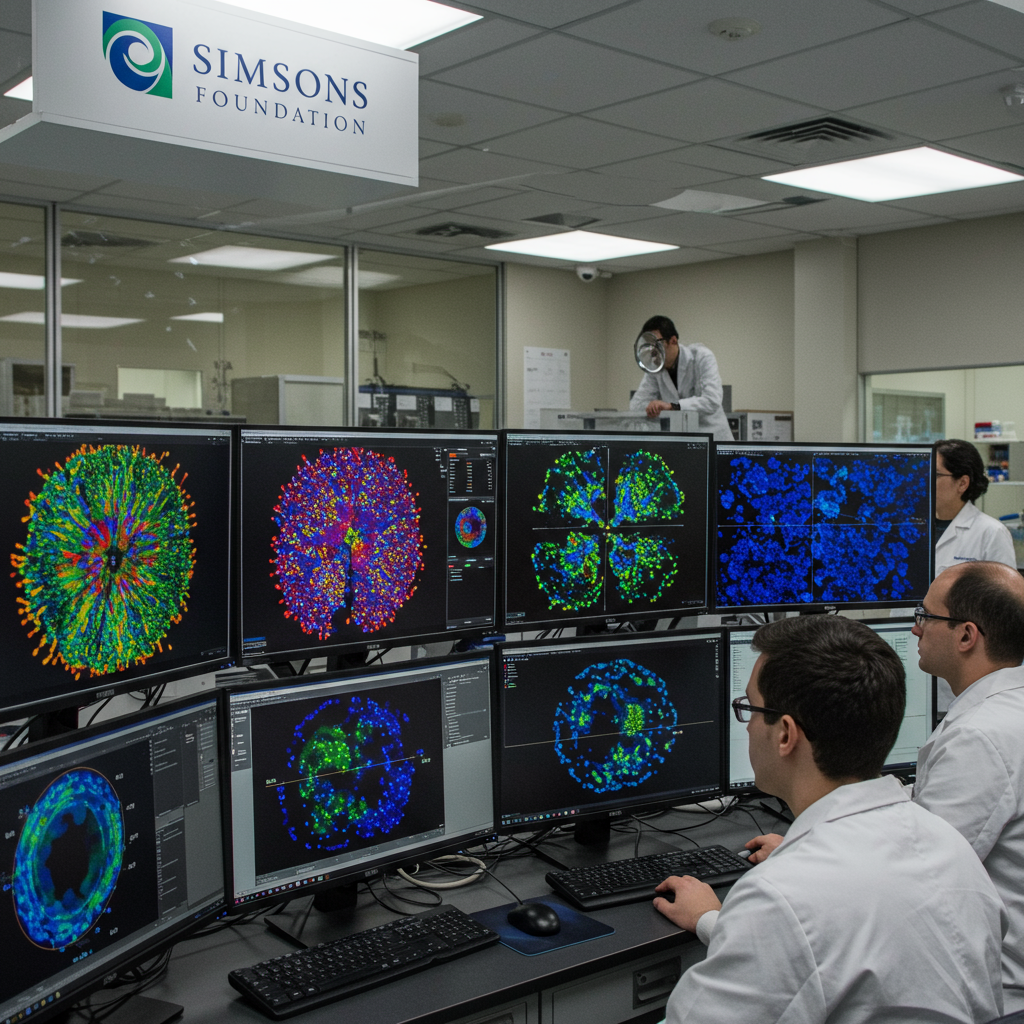Groundbreaking research is poised to redefine our understanding and diagnosis of autism spectrum disorder (ASD). A recent study out of Princeton University and the Simons Foundation has uncovered four distinct genetic subtypes of autism. This discovery could significantly accelerate diagnosis rates in the coming years. It particularly impacts groups previously overlooked by traditional diagnostic methods.
Identifying these unique genetic profiles, or “fingerprints,” offers a crucial piece in the puzzle of autism’s origins. It helps explain the condition’s varied presentation. Some children display clear signs early on. Others aren’t diagnosed until they reach school age or even later in life. This new genetic roadmap provides objective markers beyond behavioral observations.
Unlocking Autism’s Hidden Complexity
For years, diagnosing ASD has primarily relied on observing behaviors. These include social interactions, repetitive actions, and sensory sensitivities. While essential, behavioral assessments can be subjective. They may lead to delays or missed diagnoses, especially for individuals with more subtle presentations.
This new research links specific clusters of behavioral traits to measurable genetic differences. Each identified subtype possesses a remarkably distinct DNA profile. This objective insight into autism’s biological underpinnings is a major step forward.
Dr. Ryan Sultan, a double board-certified psychiatrist, highlighted the significance. He noted the move towards identifying biological markers and genetic subtypes is compelling. Dr. Sultan, who was not involved in the study, believes diagnosing ASD based on genetic or biological profiles, not solely behavior, is a major advance. He added it promises more precise and earlier diagnoses. It also opens the door for developing targeted interventions and treatments tailored to specific subtypes.
Current diagnostic frameworks categorize autism into three severity levels (Levels 1-3). These levels are based on the perceived impact on social skills and repetitive behaviors. However, this broad classification often fails to capture the full spectrum of individual differences within the condition. Autism is complex, with varied sensory sensitivities and frequent co-occurring conditions like ADHD or epilepsy.
A Path Towards Personalized Care
Scientists have long sought to refine the tiered model by finding biologically distinct subtypes. This new study provides a robust framework rooted in genetics. Unlocking these subtypes could revolutionize care approaches. It shifts from a one-size-fits-all method to personalized medicine for the autistic community.
Dr. Nechama Sorscher, a child psychologist specializing in autism, emphasized the positive impact. She noted that raising awareness of the different ASD categories, particularly milder types, can increase diagnoses. More individuals may recognize their symptoms and challenges. Crucially, understanding the genetic causes helps remove stigma and blame. It empowers individuals with ASD, their friends, and their families.
This genetic understanding is expected to lead to earlier and more accurate diagnoses. This is critical for ensuring children receive essential support during their formative years. Emerging research suggests genetic testing and refined screening tools could soon catch cases previously missed. This could prevent years of struggle and isolation for thousands of overlooked children.
The Four Genetic Subtypes Identified
The study analyzed data from approximately 5,000 children. It revealed four distinct genetic subtypes, each with unique characteristics and genetic underpinnings:
Social/Behavioral (37%): This largest group presents with classic autism traits but without significant developmental delays. They often show high rates of co-occurring mental health conditions like ADHD, anxiety, and depression. Because their developmental progress can mask underlying social challenges, they are frequently diagnosed later, often around school age.
Mixed ASD and Developmental Delay (19%): This group typically experiences early speech and motor delays. They tend to have fewer co-occurring mental health issues compared to the Social/Behavioral group. Genetic analysis found a higher likelihood of rare inherited mutations in this subtype. This suggests a strong genetic origin potentially linked to prenatal development. Their core symptoms can vary, with some struggling more with social interactions and others showing pronounced repetitive behaviors.
Moderate Challenges (34%): Individuals in this category exhibit milder autism symptoms. They generally meet developmental milestones. This group often has fewer significant co-occurring mental health conditions. This might reduce their need for long-term medication or intensive support. Their genetic profile involves lower-impact variants, which likely contribute to their less severe presentation.
Broadly Affected (10%): This subtype represents the most severe presentation. It combines significant developmental delays, substantial social-communication difficulties, and psychiatric comorbidities. Genetically, individuals in this group are more likely to have damaging spontaneous mutations. These are genetic changes that occur randomly and are not inherited from parents.
These findings challenge earlier ideas by showing that genetic triggers for autism can become active both before and after birth. Understanding these subtypes provides researchers with a clearer path to investigate the complex genetic architecture of ASD.
Broader Implications for Diagnosis Rates
Improved screening and identification tools, guided by this genetic research, will inevitably lead to an increase in diagnosed cases. This includes thousands of undiagnosed children and adults who have historically “slipped through the cracks.” This is particularly true for girls and individuals with subtle subtypes that didn’t fit the typical diagnostic mold.
The average age for an autism diagnosis is five. However, many parents notice social quirks as early as two years old. Despite this, many individuals are diagnosed much later, sometimes as teens or young adults. This delay often stems from outdated criteria, stereotypes, or lack of awareness. A study from Rutgers University highlighted this, finding 176 teens in their research were diagnosed at 16 years old. This underscores that the condition is frequently missed in childhood.
With greater awareness of subtle presentations and the availability of more objective, genetic markers, earlier diagnosis could become standard. This ensures children receive crucial support during their most impactful developmental years.
Contextualizing the Rise in Diagnoses
The potential surge in diagnoses comes amidst an already rising trend in ASD prevalence in the United States. An estimated 2.3 million children and 7 million adults currently have ASD in the US.
Data from the Centers for Disease Control and Prevention (CDC) shows a sharp increase over the past two decades. In 2000, about 1 in 150 children received an ASD diagnosis. By 2020, that figure had risen dramatically to 1 in 36 children. This represents a near-quadrupling of diagnosed cases. A separate 2024 study analyzing health records of 12.2 million Americans further illustrated this rise, showing a 175 percent increase in autism diagnoses over just 11 years.
Experts debate the exact reasons for this increase. Factors include increased awareness among parents and professionals, expanded diagnostic criteria, and reduced stigma. Some researchers also believe biological and environmental factors may play a role. This new genetic research adds another layer, providing a clearer mechanism for identifying more cases that previously went unrecognized.
The Complex Nature of Autism Genetics
While groundbreaking, this study is part of a larger picture. Currently, known gene variations explain only about 20 percent of autism cases. Researchers emphasize that the remaining 80 percent likely involve a complex interplay. This includes environmental factors, epigenetic modifications (changes in how genes are expressed), and gene-environment interactions. Much of this interaction is still not fully understood by scientists.
Dr. Olga Troyanskaya, lead author of the Princeton study, clarified this complexity. She stated that just because 80 percent of individuals lack a known genetic cause doesn’t mean genetics aren’t primarily involved. Autism is highly heritable, estimated at 70-90 percent. This suggests the majority of cases are primarily genetic in origin.
The challenge lies in the sheer complexity of these genetics. This makes it difficult to pinpoint precise genetic changes in most individuals with an autism diagnosis. The exact architecture of autism genetics is still being mapped. A key potential impact of this study is its subtype framework. It allows researchers to dissect autism’s genetic heterogeneity. This could enable the identification of genetic causes for a greater number of individuals in the future.
Implementing these genetic subtypes into standard clinical practice will require further research. Dr. Troyanskaya noted it typically involves many steps. These include independent replication studies, feasibility assessments, and evaluations of the impact on diagnosis and care before formal adoption.
Frequently Asked Questions
What are the four newly identified genetic subtypes of autism?
Researchers from Princeton University and the Simons Foundation identified four distinct genetic subtypes of autism spectrum disorder (ASD) based on a study of about 5,000 children. These include the Social/Behavioral subtype (37%), characterized by classic autism traits and high co-occurring mental health issues; the Mixed ASD and Developmental Delay subtype (19%), marked by early speech/motor delays and likely rare inherited mutations; the Moderate Challenges subtype (34%), showing milder symptoms and fewer mental health comorbidities; and the Broadly Affected subtype (10%), which represents the most severe presentation with significant delays and psychiatric issues, often linked to spontaneous mutations.
How might this new genetic research change the current process for diagnosing autism?
Currently, autism diagnosis relies mainly on behavioral observations. This new research suggests a shift towards incorporating objective biological markers, specifically genetic profiles linked to the four identified subtypes. Experts believe this could lead to more precise and earlier diagnoses. Identifying genetic “fingerprints” could help confirm a diagnosis or point towards specific subtypes, potentially guiding interventions. While widespread clinical adoption will take time and further study, the findings lay the groundwork for future diagnostic tools that combine behavioral assessment with genetic insights.
Who is most likely to benefit from the identification of these new autism subtypes?
The identification of these genetic subtypes holds significant promise for several groups. Individuals with more subtle presentations of autism, who may have been previously overlooked or misdiagnosed, could benefit from more accurate identification. Girls, who are often diagnosed later or missed due to differing presentations, are particularly highlighted as a group likely to see increased diagnosis. Children diagnosed early based on these subtypes could receive more tailored and effective early interventions. Furthermore, understanding the genetic basis helps remove stigma and empowers autistic individuals and their families.
The Future of Autism Diagnosis
This breakthrough study offers a glimpse into the future of autism diagnosis and care. By moving beyond broad behavioral categories to genetically defined subtypes, researchers are paving the way for a more nuanced understanding of ASD. While widespread clinical implementation may take time, the potential for earlier, more accurate diagnoses and personalized support is immense. As awareness grows and genetic screening tools become more refined, the number of identified cases is likely to increase, ensuring more individuals receive the understanding and support they need to thrive. This research underscores the complex, yet increasingly decipherable, biological basis of autism, shifting the narrative towards empowerment and tailored interventions.




